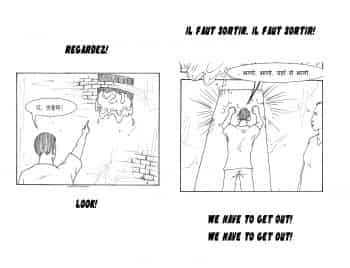Bonus
-
Let the reader discover the story : The exemple of The Wire
This comment comes from Terressa Lezzi in her discussion of an academic video that looks at the TV series The Wire: “The result of this style was a show that allowed viewers the satisfaction of discovering the beauty of a story, instead of having it explicitly and repeatedly pointed out of them” (“Why You Love The Wire, Explained in Fascinating Detail,” www.fastcompany.com).
Marc Alan Fishman was talking along the same lines when he said the best comics are those that take the time to really present their concept in as many as five or six issues (“How To Succeed in Comics Without Really Trying,” www.comicbookdaily.com, February 25, 2012). In an interview, Brian K. Vaughan similarly said he hadn’t written a big twist at the end of the first issue of the SAGA series (“Interview: Brian K. Vaughan on SAGA, Lost, Twitter and more,” The Beat, comicsbeat.com, March 14, 2012). We naturally agree with this point of view, but we’ll see in future comments that others favour a much more direct approach.
-
Behind the Scenes : An Opportunity Not to Be Miss
-
But what were they saying? (Setting the stage – Part II)
-
Where Does the Name of Georges Cartier Come From?
The first magnate of the Consortium, Georges Cartier, is named after Canadian politician Georges-Etienne Cartier, who was one of the fathers of Canadian Confederation. The character’s physical appearance is also inspired by that historical figure.
-
But what were they saying? (The Test)






